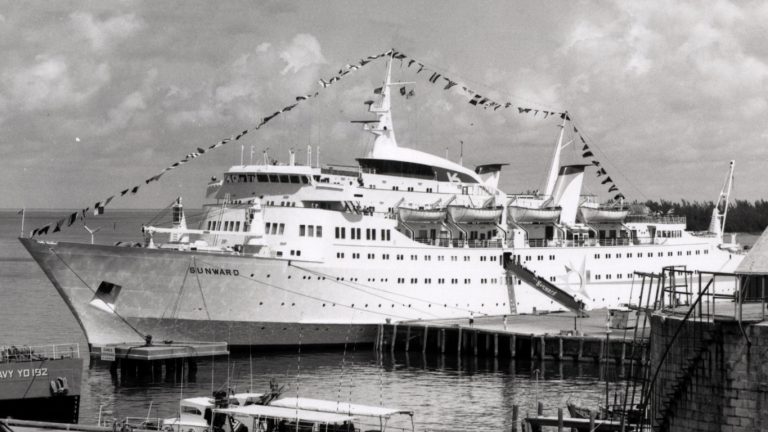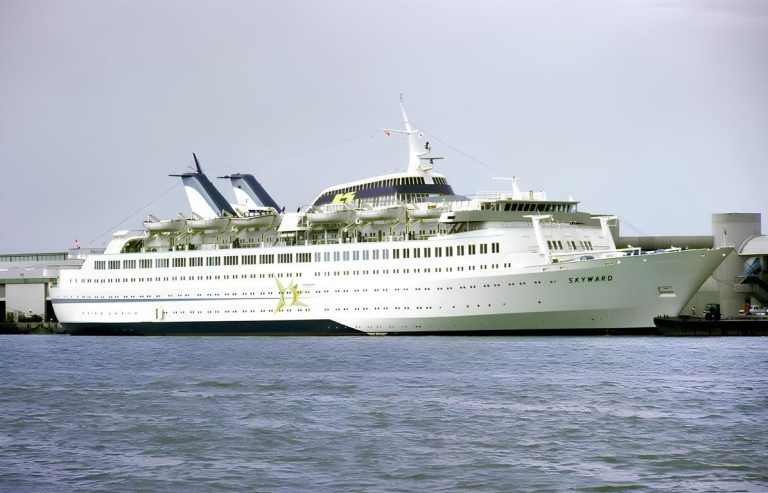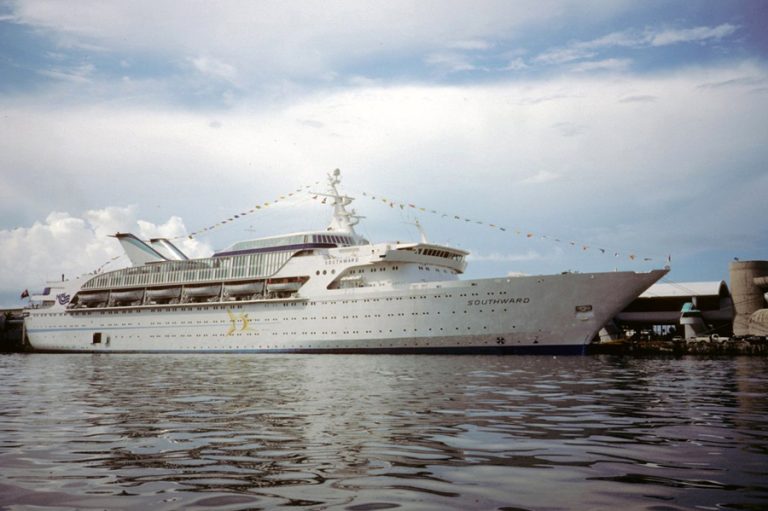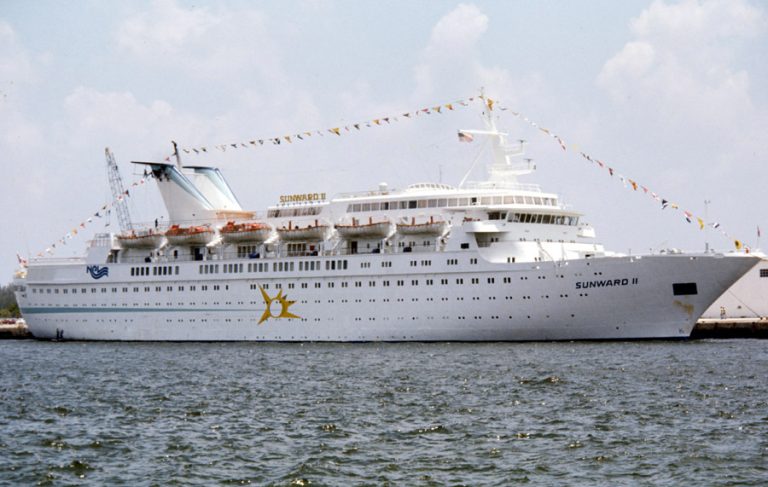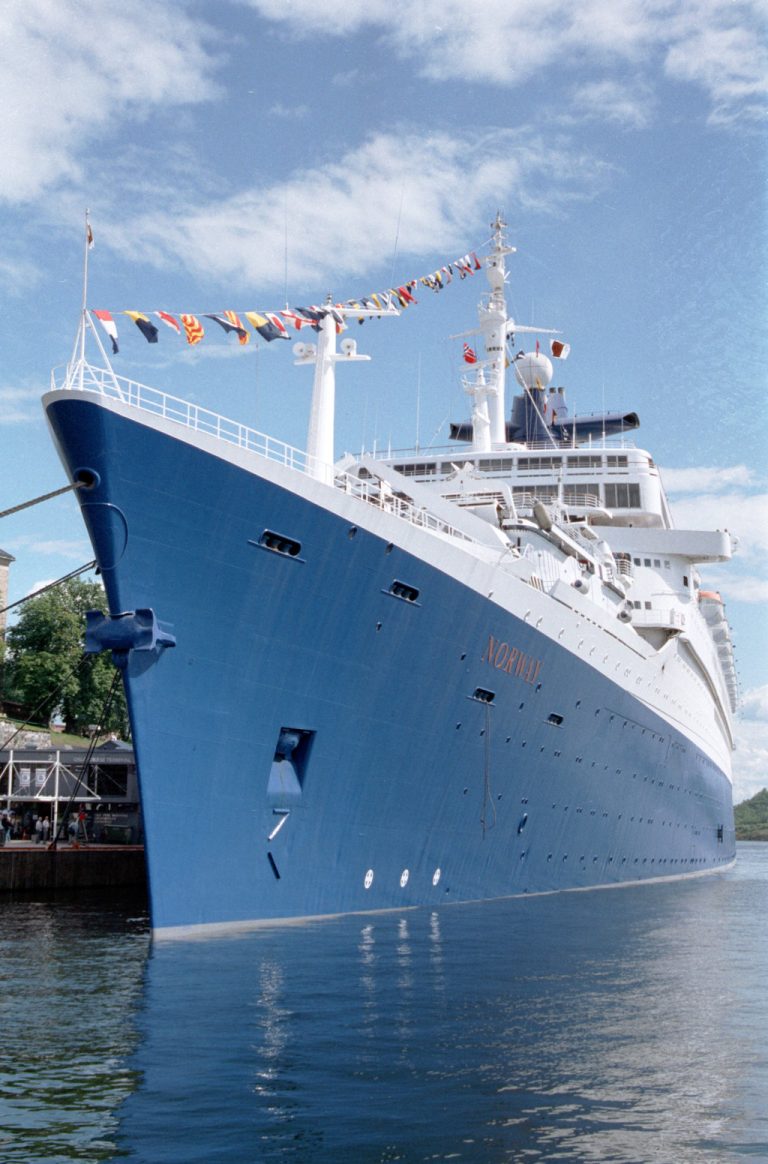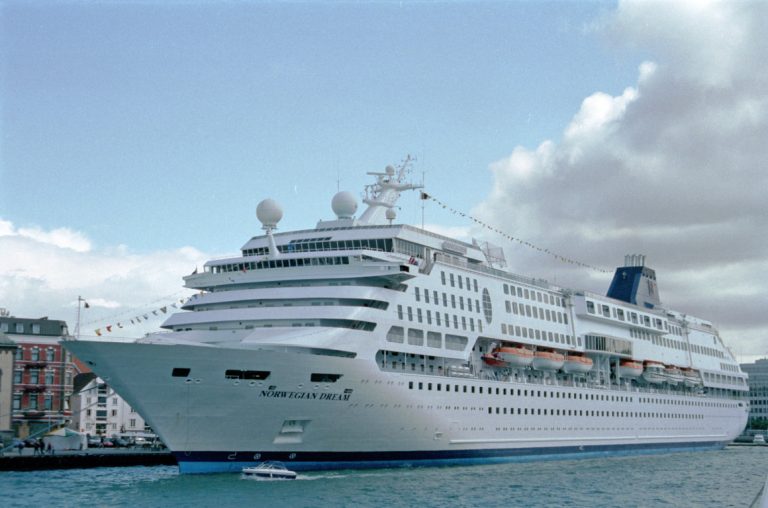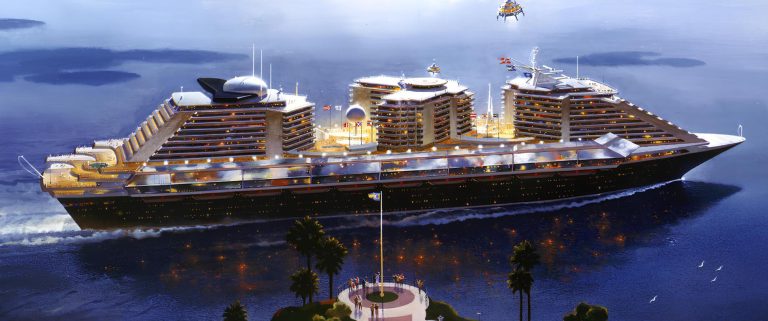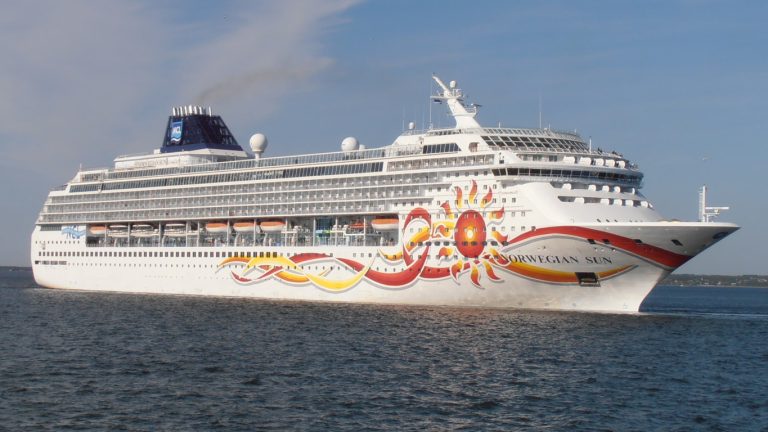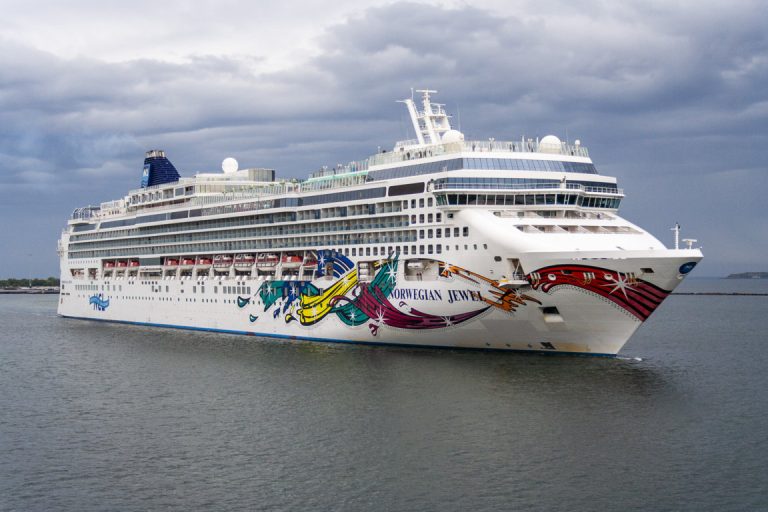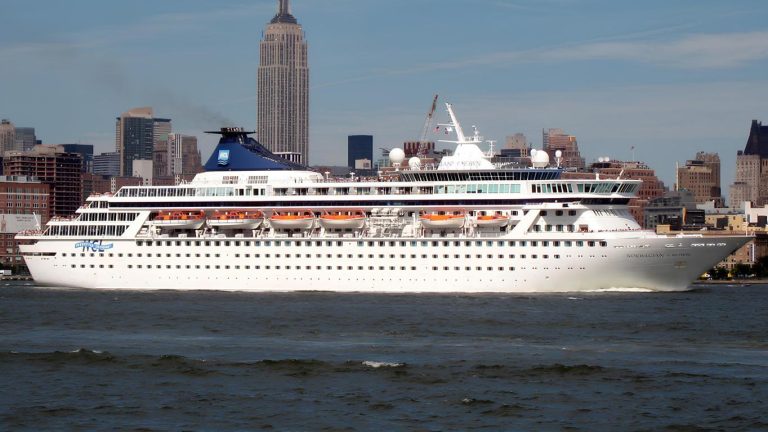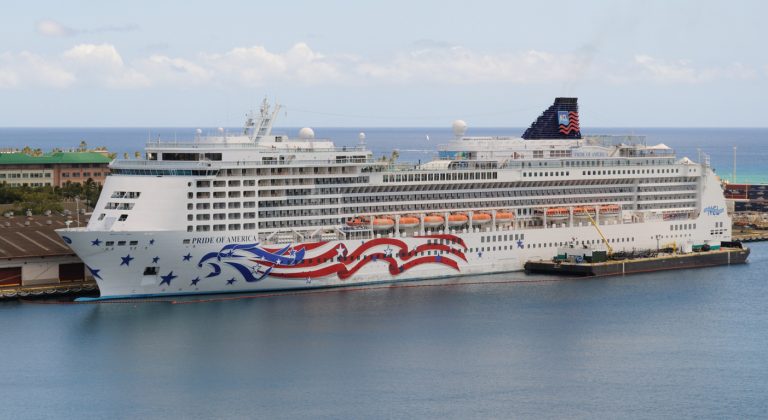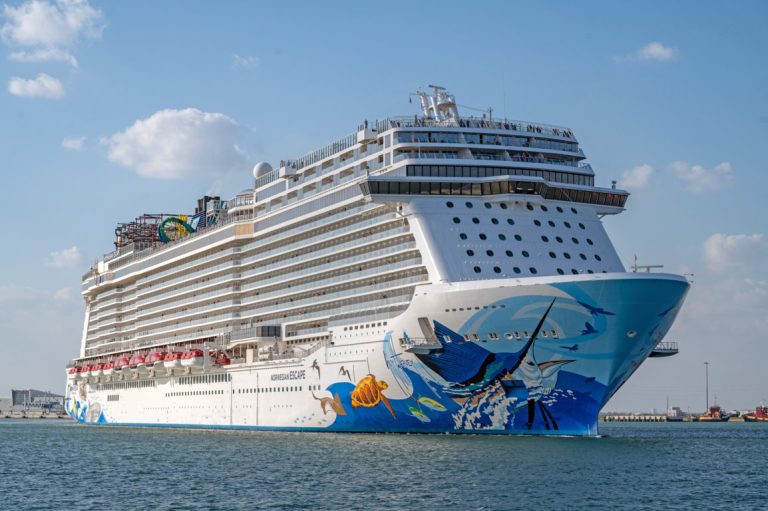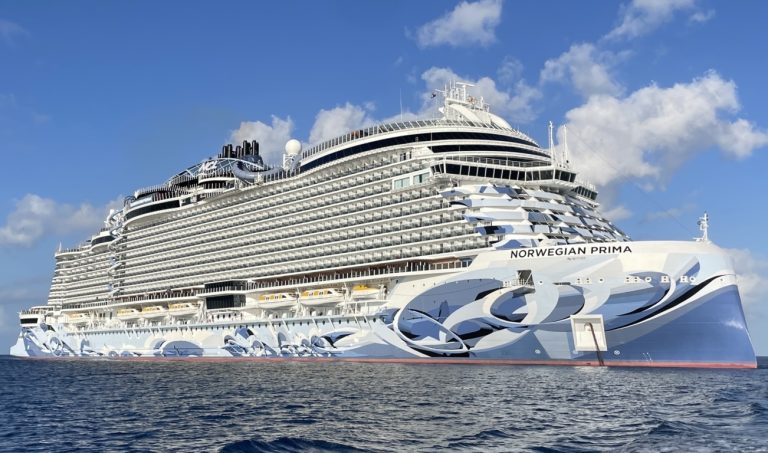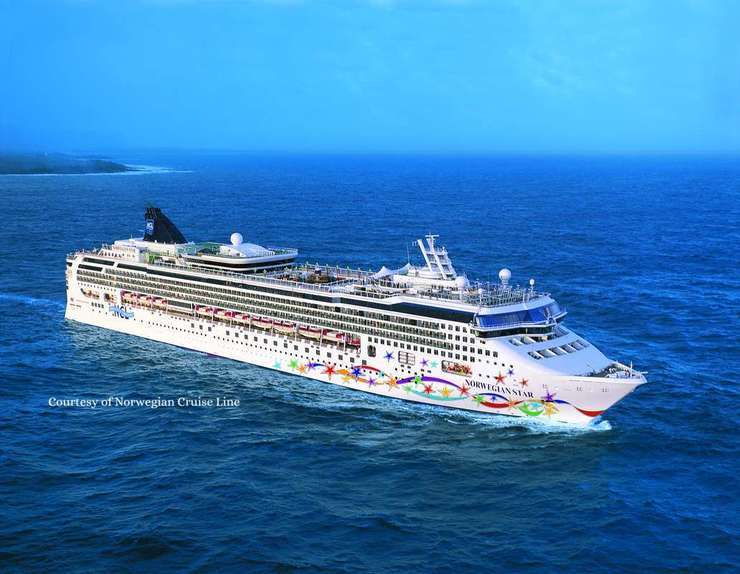The history of Norwegian Cruise Line
This is the story of a venture that has turned challenges into successes. Born from passion, it managed to distinguish itself in the industrial landscape and set new standards. It dared where others had never dared before and achieved great milestones. However, as often happens, this company also faced difficult times, risking to lose its relevance. But just when it seemed destined to fade into oblivion, a savior arrived, coming from afar, who brought it back to glory. So here is the story of Norwegian Cruise Line, a tale that, though incredible, is a testament to human resilience and determination in the face of adversity.
It all began with a dilemma: Norwegian navigator Knut Kloster had ordered in 1965 from the shipyard Bergens Mekaniske Verksted (Norway) a state-of-the-art car ferry for the time, which was delivered to Klosters Rederi on June 20, 1966. The Sunward was subsequently deployed between Southampton and Gibraltar, but the route was suspended already at the beginning of November of the same year. So an attempt was made to sell the ship to Silja Line, which failed due to the lack of classification for navigation in icy areas. However, there was an interested party: Ted Arison, an American entrepreneur of Israeli origin, offered Kloster to use the Sunward for cruises departing from Florida. The Arison Shipping Company had already operated a ferry service between Florida and the Bahamas, but suddenly found itself without the leased ships after they were seized by the Israeli state, which had financed them, following the owner’s bankruptcy. Thus the Norwegian Caribbean Lines was born. On December 19, 1966, the ship set sail for the first time from Miami to Nassau. In addition to two cabin decks, the Sunward offered two decks with public spaces and another two with outdoor areas, including a small panoramic lounge. The main advantage was the continuous air conditioning of the modern ship. The passenger ships previously used for cruises departing from Florida often did not offer this service, and the Sunward‘s booking numbers developed so positively that already in 1968 and 1969 two larger ships followed.
SUNWARD in Key West 1970
Klosters Rederi had ordered from the shipyard Seebeck in Bremerhaven (Germany), belonging to AG Weser, two ships named Starward and Skyward. These ships were about 80% larger and conceived exclusively as cruise ships, although the Starward initially had a small car deck, which was replaced by additional cabins and public areas in 1976. In 1969 and 1970, two more ships were ordered, this time from the Italian shipyard Cantieri Navali del Tirreno Riuniti. The first of the two ships, the Southward, was christened on November 30, 1971, in Miami, but the planned Seaward never entered service for Kloster. During the construction of the ships, in fact, the shipyard ran into financial difficulties, and after serious disputes between the shipping company and the shipyard regarding the delivery, the latter was sold to the Peninsular & Oriental Steam Navigation Company, known as P&O, for completion, and in 1972, it entered service as Spirit of London.
SKYWARD in Miami 1980
SOUTHWARD in Miami 1986
The growing tensions between Arison and Kloster led in 1971 to the break-up of the collaboration. Arison and his American employees had previously managed the marketing and sales areas, while the operation of the ships was entrusted to Kloster’s Norwegians. Kloster continued to operate independently, leaving Arison once again without ships, but not for long. But this is another story, that of Carnival Cruise Line. The Sunward became a victim of its own success over the years and was sold to France in November 1972. In 1977, Kloster acquired the Cunard Adventurer from the traditional British shipping company Cunard and, after extensive refurbishment in Bremerhaven, put it into service as Sunward II, a ship just six years old.
Finally, in 1979, an event occurred that would profoundly mark the modern cruise industry: Knut Kloster acquired the France from the Compagnie Générale Transatlantique, a vessel only 17 years old that had been out of service since 1974 in Le Havre. The former transatlantic was not only one of the largest ships of its time, but also – after the United States – the second fastest passenger ship on the Atlantic and the longest passenger ship ever built up to that time. With its 66,343 GRT at the time, the France was larger than the four existing ships of the Norwegian Caribbean Lines, also known as “White Ships”! At the Lloyd shipyard in Bremerhaven, the ship was transformed into the Norway for about 80 million US dollars and renamed on April 14, 1980. The competitors of the Norwegian Caribbean Lines watched with suspicion the “new” ship. Although Ted Arison with Carnival Cruise Lines was meanwhile operating a fleet of three former transatlantics, these were not even half the size of the new NCL ship. The capacity of a ship with such imposing dimensions, including a draught of 10.5 meters, for cruises in the Caribbean was generally viewed with skepticism. The France’s machinery was essentially halved, sufficient for a normal cruising speed of 18 knots, although the ship could reach almost 26 knots with half the original power of the machinery and two propellers in case of need, as the author had the opportunity to experience firsthand! To solve the problem of the Norway, which with its large draught could hardly dock anywhere in the Caribbean, two large tenders were used – the Little Norway I and the Little Norway II – registered as independent ships and which found a place on the Atlantic Deck of the Norway. With these landing craft-like vessels, up to 450 passengers could be transferred ashore at a time. They are still used today on NCL’s private island of Great Stirrup Cay in the Bahamas. With the concept followed for the first time in the modern cruise industry, according to which the ship is more than just a means of transportation, but is itself one of the cruise destinations (“The ship is the destination”), the Norwegian Caribbean Lines opened new paths and the Norway proved to be a overwhelming success. To this day, it is considered the first modern “superliner” of the cruise industry and a precursor to the current huge resort ships, compared to which the once gigantic ship would seem almost small today.
Sunward II in Miami 1980
NORWAY in Oslo 1999
But Knut Kloster was already thinking on a much larger scale: together with the renowned design studio Knud E. Hansen, the concept of a ship of 250,000 GRT with the code name Phoenix World City was developed in the 1980s. It was to be 388 meters long and 77 meters wide, with space for 5,200 passengers. The cabins – all with sea view or balcony – were to be distributed in three skyscraper-like blocks, with public areas below and outdoor areas also between them. In fact, in 2009, the Oasis of the Seas was put into service, a ship of similar dimensions – however, by the competitor Royal Caribbean International. By 2024, ships beyond 200,000 GRT had become the norm, although many large new buildings were still below this threshold. Phoenix World City was followed as a project for over ten years, but was never realized.
However, the actual development of Norwegian Caribbean Lines, renamed Norwegian Cruise Line in 1987, took a different direction. In 1986, Kloster acquired Royal Viking Line and, faced with the construction plans of competitors Carnival Cruise Lines and Royal Caribbean Cruise Line, who had planned ships similar in size to that of the Norway – specifically designed for cruises – the company initially had little to oppose. In 1987, Royal Caribbean introduced the Sovereign of the Seas, a ship larger than the Norway, while Carnival launched the Fantasy in 1990, also about 70,000 GRT. Norwegian Cruise Line, on the other hand, put into service the Seaward in 1988, with only 42,000 GRT, the first new building since 1971. In 1991, for just two years, two ships already 20 years old were transferred from Royal Viking Line to the NCL subsidiary, and even the subsequent new buildings – Dreamward and Windward in the ’92 and ’93 – were rather moderate with about 40,000 GRT. In the 1990s, there were further acquisitions of second-hand ships, partly through the acquisition of small shipping companies. From 1996, a new naming scheme was gradually introduced, with almost all existing ships, with the exception of the Norway and Leeward (the latter leaving the fleet in 1999), assuming the name Norwegian. This scheme was accompanied by the extension of three ships – Norwegian Wind (formerly Windward), Norwegian Dream (formerly Dreamward), and Norwegian Majesty acquired in 1997 – at the Lloyd shipyard in Bremerhaven. The remaining four “White Ships” from the early years had been sold between 1991 and 1995 and had all found new operators.
NORWEGIAN DREAM in Stavanger 1999
PHOENIX WORLD CITY
The construction of their first modern Superliner Norwegian Cruise Line was initiated in 1997. From the bankruptcy mass of the German shipyard Bremer Vulkan, the new building Costa Olympia was purchased, completed at about 35%, which originally had been ordered by Costa Crociere as a sister ship to the Costa Victoria delivered in 1996 but had fallen victim to the financial collapse of the shipyard. Together with the long-time partner Lloyd Werft, the ship was completed in Bremerhaven as Norwegian Sky and delivered in the summer of 1999. For completion in the summer of 2001, NCL ordered the sister ship Norwegian Sun, for which steel construction work was commissioned from Lloyd Werft in Wismar, due to the lack of its own shipbuilding capacity. The unfinished ship was then transferred through the Kiel Canal for completion in Bremerhaven.
Meanwhile, the ownership structure also underwent changes: as early as 1995, Carnival Corporation – the shipping company of Kloster’s previous partner, Ted Arison, now led by his son Micky – had evaluated the acquisition of Kloster Cruise, but then had terminated the talks. The name Kloster Cruise disappeared in 1995/1996, and NCL Holdings ASA became the parent company name of NCL. In December 1999, Carnival Corporation attempted a hostile takeover of NCL Holdings ASA by offering shareholders a purchase price for their shares considered low by analysts, equivalent to NOK 30 per share. NCL Holdings rejected the offer and, in turn, entered into talks with Premier Cruise Lines and Star Cruises, owned by the Malaysian Genting Group, which was creating the first modern cruise company in Asia with an ambitious program of new ship construction. After some ups and downs, Star Cruises and Carnival Corporation announced on February 2, 2000, that they had reached an agreement to establish a joint venture, of which Carnival held 40% and Star Cruises 60%. However, a few weeks later, Carnival withdrew from the agreement, leaving Star Cruises, later Genting Hong Kong, as the new owner of Norwegian Cruise Line.
NORWEGIAN SUN in Tallinn 2012
At the Meyer shipyard in Germany, Star Cruises had already had two large and modern cruise ships built in 1998 and 1999, ordering the Panamax SuperStar Libra and SuperStar Scorpio from the shipbuilders in Papenburg for delivery in 2001 and 2002. However, these ships were instead completed for Norwegian Cruise Line, bringing in 2001, together with the Norwegian Sun, a second new ship into the fleet with the Norwegian Star. This resulted in a major conceptual change, as Star Cruises introduced its modern cruise concept called “Freestyle Cruising” into the acquisition of Norwegian Cruise Line. Traditional fixed meal times, formal evenings, and other “old patterns” of cruising were to be eliminated. While the Norwegian Star (originally planned as SuperStar Libra) had been designed from the outset for this concept, some modifications were necessary for the Norwegian Sun. The Norwegian Dawn (ordered as SuperStar Scorpio) followed in 2002. Instead of the two new large buildings of 112,000 GRT each, ordered by Star Cruises for delivery from 2003 at the Meyer shipyard, four ships based on the Norwegian Star, but modified and slightly enlarged, were built between 2005 and 2007, belonging to the “Jewel” class.
NORWEGIAN JEWEL in Copenhagen 2008
For the Norway, the acquisition by Star Cruises in 2001 would have meant the end. So it set off on its “last” transatlantic voyage in September. After a stopover at the Lloyd shipyard, it was supposed to move to Asia. However, in a rather sudden change of decision, even considering the effects of the September 11, 2001 terrorist attacks, the ship returned to Miami, where it continued to operate on weekly cruises. Until the fateful morning of May 25, 2003. The ship had just docked again in Miami when one of its boilers exploded. Eight crew members lost their lives, another 17 were injured. The Norway was towed to Bremerhaven, where, contrary to previously announced plans, it was not repaired but eventually sold for demolition.
In August 2002, Norwegian Cruise Line confirmed, after weeks of speculation, that it had acquired two ships under construction from the bankrupt American Classic Voyages at the US shipyard Ingalls Shipbuilding. These ships had been ordered for one-week cruises exclusively in US and Hawaiian waters and, consequently, had to be built in the US, sail under the US flag, and with a US crew to comply with the Passenger Services Act of 1886 (!). However, the shipping company managed to obtain an exception to this rule, thus allowing the first ship to be completed at the Lloyd shipyard in Bremerhaven. Delivery was scheduled for spring 2004, but on January 14, 2004, the new ship sank at the shipyard dock on a stormy night, delaying delivery until June 2005. By that time, the Pride of Aloha, previously known as Norwegian Sky, had already been in service in the Hawaiian archipelago for a year. Again, Norwegian Cruise Line had managed to obtain authorization to operate two ships not built in the US under the US flag. In addition to the Pride of Aloha, there was the Pride of Hawai’i, the second ship of the “Jewel” class, completed in spring 2006. Also, on April 14, 2003, Norwegian Cruise Line surprised by announcing the acquisition of the United States, moored since 1969, the fastest transatlantic liner ever built, and also of the Independence, built in 1951 and previously operated by American Classic Voyages. Both ships built in the US would reinforce NCL America’s fleet after modifications, the new brand created specifically for the company’s Hawaiian cruises. In the following years, however, it became evident that the potential to operate as a monopolist in open sea travel to Hawaii under the US flag had been drastically overestimated. The Pride of Aloha and the Pride of Hawai’i were transferred in 2008 to NCL’s international fleet as Norwegian Sky and Norwegian Jade, while the Independence was sold the previous year and demolished in 2008. In 2010, the SS United States Conservancy managed to purchase the United States for three million US dollars. Therefore, the only Norwegian Cruise Line ship in Hawaii remains the Pride of America.
Meanwhile, in 2004, Norwegian Cruise Line entered into an agreement with Aker Finnyards for the construction of a 92,000 GRT cruise ship, to be delivered in 2007, with an option for a sister ship the following year. All cabins on the new class of ships were to have private balconies. However, the order was canceled in April 2005, and instead, the fourth and final ship of the “Jewel” class, the Norwegian Gem, was ordered from the Meyer shipyard for delivery in 2007. In 2004, one of Star Cruises’ flagship ships, the former SuperStar Leo, passed to NCL, assuming the new name Norwegian Spirit. On the other hand, until 2009, all older ships gradually left the fleet: Norwegian Sea and Norwegian Wind went to Star Cruises in Asia, while Norwegian Dream and Norwegian Majesty were destined to be sold to Louis Cruise Lines. However, the latter gave up the purchase of the Norwegian Dream, which therefore remained out of service until 2012, and then was also used by Star Cruises. The Norwegian Majesty, instead, began a new life as Louis Majesty and today operates in the Israeli market as Crown Iris for Mano Cruises. Finally, the Norwegian Crown was sold to Fred. Olsen Cruise Lines, where it still sails under the name Balmoral.
NORWEGIAN CROWN in New York City 2007
PRIDE OF AMERICA in Honolulu 2010
At the end of 2006, Norwegian Cruise Line announced the construction of a new class of three ships, called “F3,” as the third generation of Freestyle Cruising, for the years 2009-2011. The units, of about 155,000 GRT, were to be built at Aker Yards France in Saint Nazaire. In August 2007, it was announced that financial investor Apollo Management wanted to acquire a 50% stake in Norwegian Cruise Line through a one billion dollar investment. This agreement was then concluded in January 2008. 50% of the shares remained with Star Cruises. In 2007 and 2008, Apollo also acquired the cruise brands Oceania Cruises and Regent Seven Seas Cruises. Meanwhile, during the construction of the “F3” class, a dispute arose between the shipping company and the shipyard, now operating as STX France. Norwegian Cruise Line seemed to require changes to the originally agreed ship design, or, depending on the interpretation, accused the shipyard of not adhering to agreements. In particular, it concerned additional costs of over 50 million dollars per ship. In December 2008, an agreement was finally reached: one of the two ships ordered, the Norwegian Epic, would be completed in 2010, and the order for the sister ship would be canceled. NCL is said to have paid an additional 55 million euros for the completion of the Norwegian Epic and 100 million euros for the cancellation of the second ship.
After the experiences with the “F3” project, Norwegian Cruise Line returned to Meyer Werft for the next new buildings and initially ordered two ships of about 145,000 GRT each in Papenburg in October 2010, which entered service in 2013 as the Norwegian Breakaway and in 2014 as the Norwegian Getaway. Until 2019, the four largest ships of over 20,000 GRT based on the same platform followed: Norwegian Escape, Norwegian Joy, Norwegian Bliss, and Norwegian Encore. After a longer preparation, Norwegian Cruise Line Holdings, with the ticker NCLH, was again listed on the stock exchange and debuted on January 18, 2013, in New York on NASDAQ. Previous owners Genting Hong Kong / Star Cruises, Apollo Management, and TPG Capital exchanged their shares for NCLH shares, with Apollo and Star Cruises completely divesting their shares by 2018. In 2014, Norwegian Cruise Line Holdings’ portfolio expanded with the acquisition of two additional brands when the company acquired Prestige Cruise Holdings for over three billion US dollars. In addition to the mass market shipping company NCL, the high-end premium segment Oceania Cruises and the luxury brand Regent Seven Seas Cruises are now part of the offering. Two years later, in February 2016, Norwegian Cruise Line ordered four ships from Fincantieri. Announced as “Project Leonardo,” it was based on the internal, scalable design presented in 2013 of the Italian shipbuilding conglomerate’s “Mille.” The entry into service was scheduled for the years 2022-2025. On December 16, 2016, Norwegian Cruise Line celebrated a major anniversary – exactly 50 years after the Sunward left Miami for its first cruise.
NORWEGIAN ESCAPE in Port Canaveral 2023
The COVID-19 pandemic and the subsequent global cruise shutdown have hit Norwegian Cruise Line hard, as well as all other shipping companies. A huge assumption of debt to be able to settle debts and current expenses was necessary, as was the case for the other major cruise companies. However, Norwegian Cruise Line Holdings remained the only one of the three major US cruise companies that, during the pandemic, did not separate from any ships! The first two “Project Leonardo” – Norwegian Prima and Norwegian Viva – entered service in 2022 and 2023, with four more to follow as “Prima Plus” entering service until 2028, starting with the Norwegian Aqua next year. Meanwhile, the previous owner Star Cruises / Genting Hong Kong declared bankruptcy in January 2022 and closed its operations. The three former NCL ships still part of the Star Cruises fleet – SuperStar Libra (formerly Seaward), SuperStar Gemini (formerly Dreamward), and SuperStar Aquarius (formerly Windward) – fell victim to the bankruptcy and were demolished.
NORWEGIAN PRIMA in Grand Cayman 2023
Today, the Norwegian Cruise Line fleet consists of 19 ships. After Carnival Cruise Line and Royal Caribbean International, each with 27 ships, and MSC Cruises with 22 ships, the shipping company has the fourth-largest fleet among all cruise companies.
Don’t miss news, updates and information on the world of cruises on Cruising Journal.

